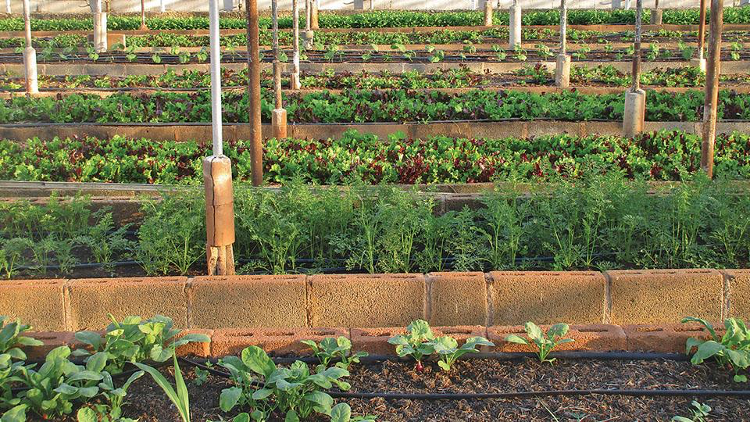The Challenge
Los Angeles County has high rates of food insecurity, federal food assistance and chronic diet-related diseases, in part due to lack of access to fresh fruits and vegetables and limited green space and safe outdoor spaces in many communities. Urban agriculture has the potential to improve public health through increased food access and consumption, thus may help address urban food insecurity. However, there is very limited data and documentation of urban agriculture activities (e.g. size, production, crop types) in the County. Recognizing this data gap, this project expanded the current documentation efforts and assessed the production potential focusing on how urban agriculture affects public health by integrating health impact assessment (HIA) methodology, geospatial analysis and policy review.
Results
- For the population of City of Los Angeles, urban agriculture can provide between 7% to 111% of the vegetable need at current levels of consumption depending on the growth scenarios. About 35% of the current vegetable need can be met if all available vacant lot area is converted to intensive urban agriculture. Though total conversion is unlikely, the potential to provide over 1/3 of the City’s current produce need is significant.
- The average annual crop yield and water reduction (% water savings relative to lawn use for comparison) across four major urban agriculture sites (Sarvodaya Farms in Pomona; Seeds of Hope; Farmscape; Hillcrest Country Club of Beverly Hills) in Los Angeles County was calculated:
- The average crop yield is 1.9 pounds per square foot per year – much higher yield than previously published values averaging around 1.27.
- Similarly, the average water reduction is estimated at 40.6%. This demonstrates that urban agriculture can be very efficient with water and are more water-wise relative to average lawns.
- Urban agriculture is disproportionately distributed across Los Angeles County; thus, less agriculture activity is happening in high-need communities. A vast majority of verified urban agriculture sites are school gardens, followed by farms, farmer’s markets and community gardens.
- Less than 3% of urban agriculture occurs in food desert communities: 17 farms, 13 school gardens and 2 community gardens.
- Only 7% of current urban agriculture is happening in the cities with the highest obesity rates in Los Angeles County.
- Given urban agriculture benefit communities in which they are located, the placement and expansion of these sites should be specifically targeted in high-need communities.
Deliverable and Impact
An urban agriculture hotspot tool was developed that maps existing urban agriculture sites, vacant lots and potential future sites, and areas of high need throughout the City and County of Los Angeles. Additionally, a final report was produced for the UCLA Sustainable LA Grand Challenge, the Los Angeles Food Policy Council and UC ANR outlining the following:
- Measurable public health impacts
- Current and potential crop yields for different growth scenarios
- Maps of community access to and need for urban agriculture sites across Los Angeles County
Together, this tool and report can help identify and prioritize the areas that could benefit the most from new and/or increased urban agriculture activities in Los Angeles County.

Fellow
Tyler Watson
Doctor of Philosophy, Environmental Health Sciences
Mentor
Hilary Godwin
(Formerly with) Environmental Health Sciences, Fielding School of Public Health
(Currently) Environmental and Occupational Health Sciences, University of Washington
Partner
University of California Agriculture and Natural Resources (UC ANR), UC Cooperative Extension
For over 100 years, UC ANR has been the local UC connection, delivering the power of UC research in agriculture, natural resources, nutrition and youth development to Californians in their own communities to improve lives and livelihoods. Their statewide network of UC Cooperative Extension academics connects with research faculty to support healthy communities with science-based strategies and technologies. During 2018-2019 alone, their work resulted in 24 patents, over 900 policy engagement activities and over 2,100 credible, audience-driven educational materials.




